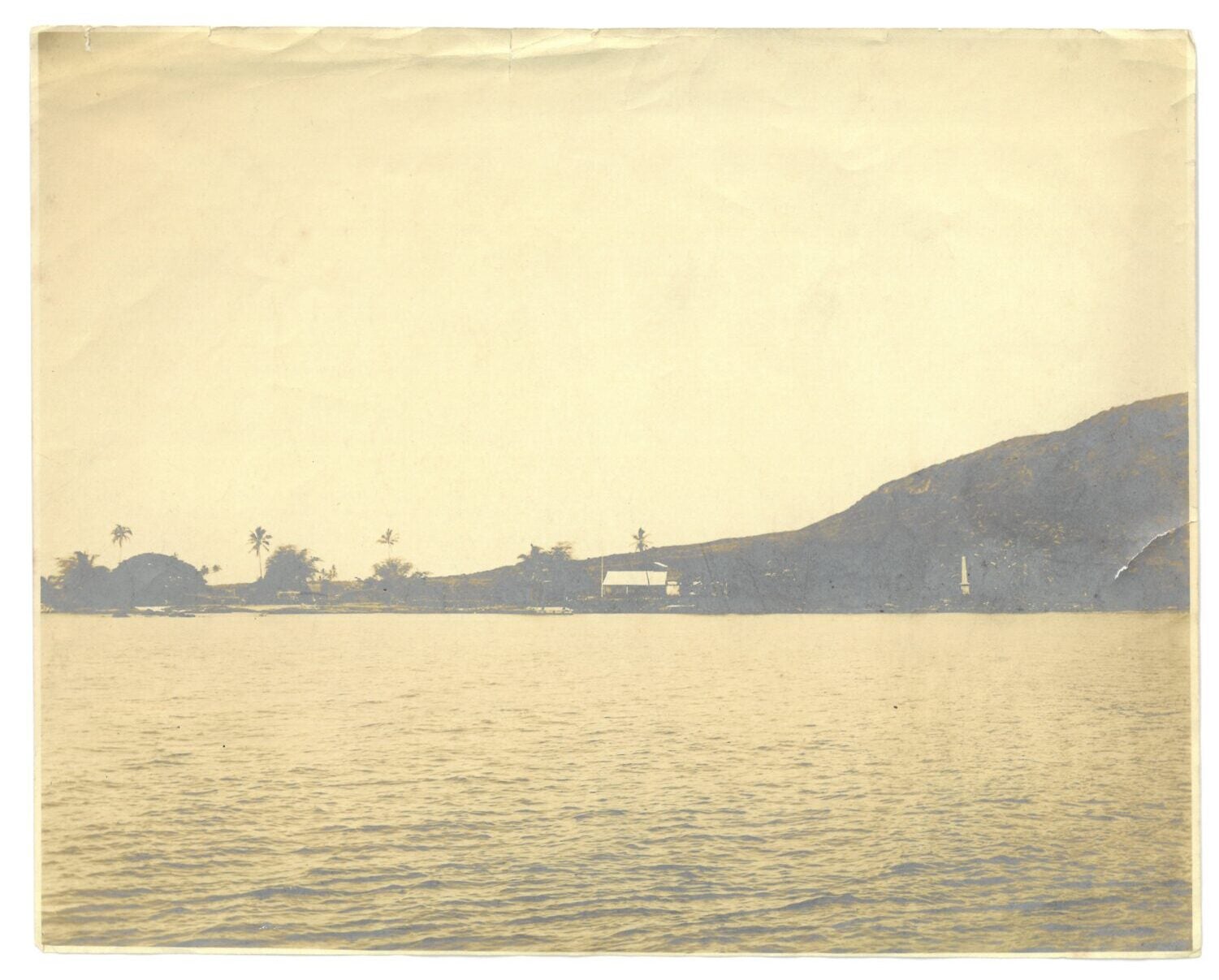Captain James Cook Monument, Hawaii, ca. 1904-1905
When he took this picture of the Captain Cook Monument, sometime during 1904-1905, Lt. Commander Albert Parker Niblack was captain of the USS Iroquois (AT-46), a steam tug based at the U. S. Naval Station in Honolulu, Hawaii. The Iroquois, originally built as “Fearless” by Union Iron Works in San Francisco in 1892, had been purchased by the Navy and was used as a tug, mail boat, and surveying and supply ship, sailing back and forth between the various Hawaiian islands and Midway Island far to the West.[1] It was during one of these voyages that Niblack photographed the Cook Monument, which stands just inland from Kealakekua Bay, on the South Kona Coast of the Big Island of Hawaii. It appears from the angle of the scene that the Iroquois was at anchor in the bay when he took the shot.
The monument, built by the British Government in 1874, honors the memory of Captain James Cook, who was the first European to visit the islands in 1878, and who was killed by the Hawaiians during a skirmish on 14 February 1779. Today, the scene looks very much the same as it did when Captain Cook first landed there. Much of the coast is a national marine sanctuary or a state historical park.[2]
The monument is a 27-foot-tall obelisk. It marks the spot where Captain Cook died. For more than a century it remained a somewhat obscure local tourist destination more famous for its snorkeling than its history. In recent years, however, vandals have defaced the monument several times to protest colonialism.[3]

1080.3.c.1 Captain James Cook Monument Hawaii, 1904-05, Albert Parker Niblack Papers (#1080), East Carolina Manuscript Collection.
Sources:
[1] USS Iroquois (1898-1928, later AT-46) (navy.mil) Naval History and Command Website.
[2] https://www.britannica.com/biography/James-Cook. Britannica Website.
[3] https://www.westhawaiitoday.com/2022/01/04/hawaii-news/investigation-underway-state-probing-vandalism-of-captain-cook-monument/ West Hawaii Today Website.